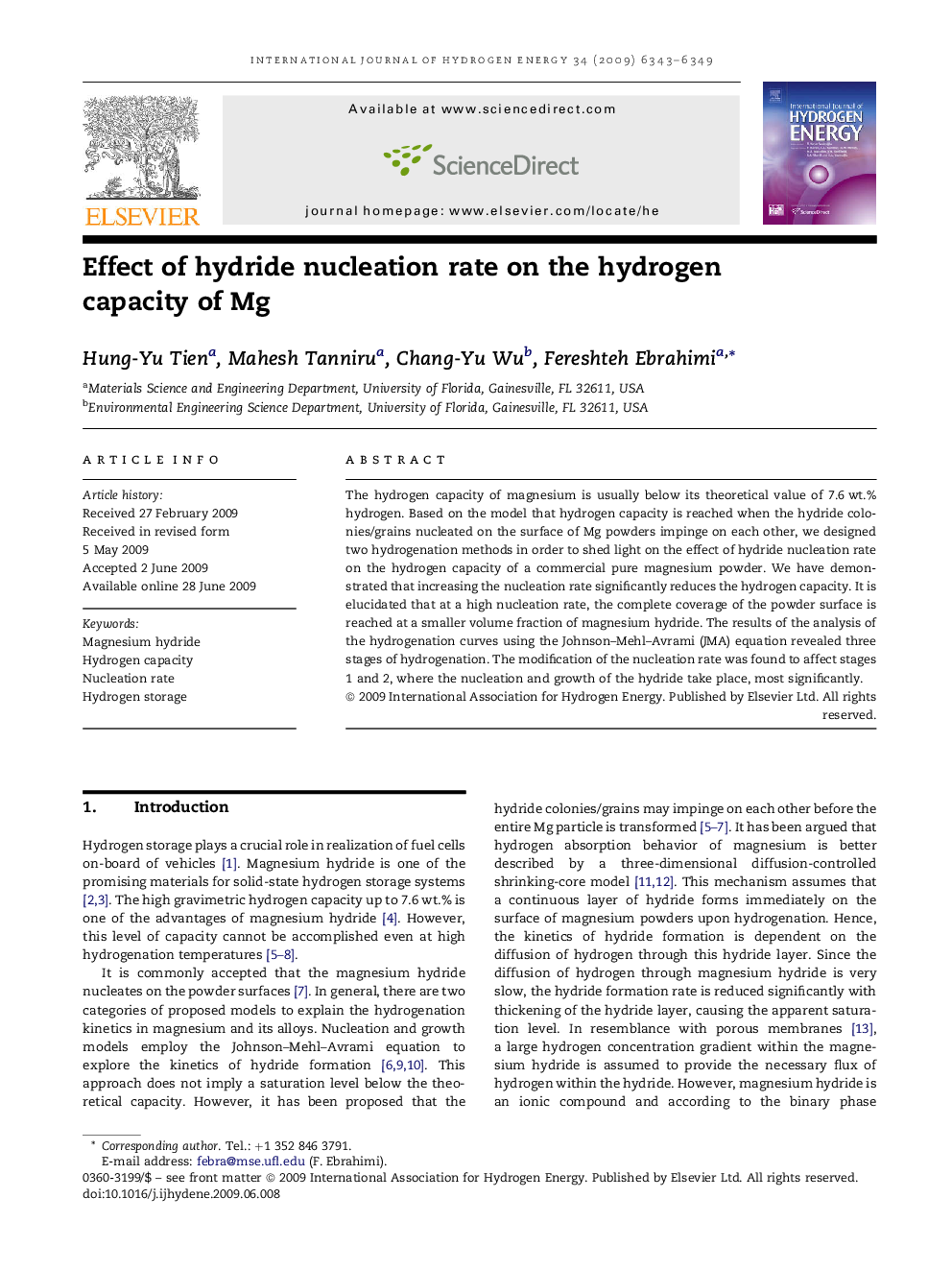| Article ID | Journal | Published Year | Pages | File Type |
|---|---|---|---|---|
| 1283145 | International Journal of Hydrogen Energy | 2009 | 7 Pages |
The hydrogen capacity of magnesium is usually below its theoretical value of 7.6 wt.% hydrogen. Based on the model that hydrogen capacity is reached when the hydride colonies/grains nucleated on the surface of Mg powders impinge on each other, we designed two hydrogenation methods in order to shed light on the effect of hydride nucleation rate on the hydrogen capacity of a commercial pure magnesium powder. We have demonstrated that increasing the nucleation rate significantly reduces the hydrogen capacity. It is elucidated that at a high nucleation rate, the complete coverage of the powder surface is reached at a smaller volume fraction of magnesium hydride. The results of the analysis of the hydrogenation curves using the Johnson–Mehl–Avrami (JMA) equation revealed three stages of hydrogenation. The modification of the nucleation rate was found to affect stages 1 and 2, where the nucleation and growth of the hydride take place, most significantly.
